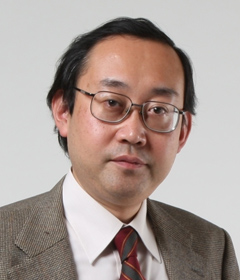Message

Professor Shigeki Sugano,
Department of Modern Mechanical Engineering, Graduate School of Creative Science and Engineering
Coordinator for the Graduate Program for Embodiment Informatics
Japan’ s monozukuri(manufacturing) technology is highly regarded around the world. It creates mono, all kinds of tangible products from cars and trains to production equipment. Nevertheless, many world-leading innovators, such as Google, Apple, and KUKA, were first established in Europe and the U.S. Some believe that in the monozukuri field Japan lacks human resources with three abilities: foresight, the ability to identify possible areas for innovation; imagination, the ability to integrate advanced technology in a broad range of fields; and leadership and executive ability, the ability to forge ahead. In particular, foresight and imagination are essential in the fields of information and communications technology and mechanical systems to develop new medical, welfare, manufacturing and social infrastructures. Development of human resources in these fields is a priority that researchers, educators, and entrepreneurs in the fields need to address.
Of importance here is how information and communications technology should be connected with mechanical technology. Both are core technologies in monozukuri, so many universities and research institutions have been working to combine them. Merely combining them, however, does not achieve technological innovation or integration. Those who are familiar with programming and networks in the field of information and communications technology need to learn mechanical design, while those who are familiar with mechanical design need to learn methodology in the field of information and communications technology. In other words, there is a need for talented individuals who have completed a course of comprehensive study in a new academic and research field integrating these two technological fields.
For example, developing a surgery support system requires high-precision robotic and human interface technologies. If methodology in the information and communications field, such as networking and high-speed data processing, can be applied to such a system, this new surgery support system will be able to manage large amounts of medical data and instantly provide appropriate therapeutic procedures. This is embodiment informatics.
If a student learns about the core technologies in one of the fields of information, communication, or machinery, graduates from that department, and then goes on to graduate school to study that field, he or she will gain expertise in that field only. However, if a student goes on to graduate school to study embodiment informatics—a program that combines these fields—rather than going on to graduate school to study each field individually, he or she can successfully develop foresight, imagination, and the leadership and executive ability to achieve breakthroughs. Of course, the study environment is important. If students conduct their studies independently of each other, they cannot generate new ideas in embodiment informatics. For this reason, Waseda University has created an educational space called the “Workshop” , where all students come together to study and motivate each other. Why not join the Waseda “Workshop” and the Graduate Program for Embodiment Informatics in demonstrating how innovative and world-class Japan’s monozukuri technology can be?
